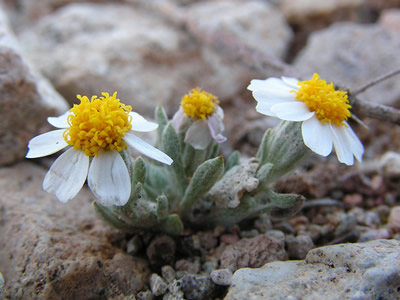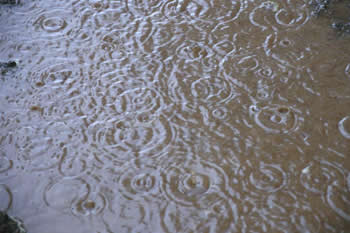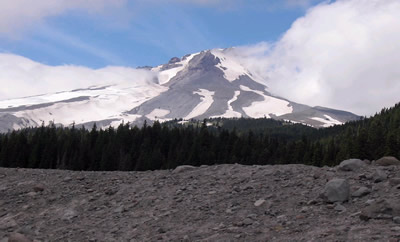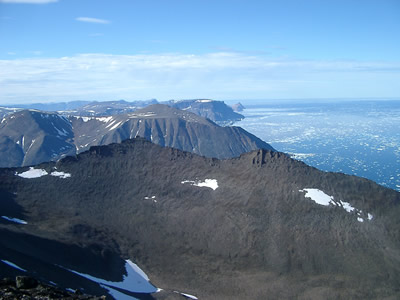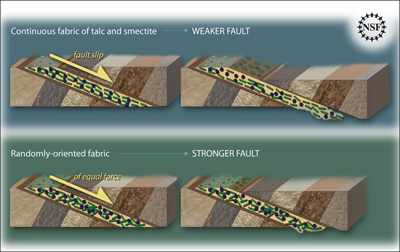Click on image for full size
Image Courtesy of Jonathon Horst
Even in the Desert, Plants Feel the Heat of Global Warming
Global warming is a hot topic, and it's causing concern for scientists studying winter annuals in the Sonoran Desert.
While desert winters have become warmer and drier over the years, climate changes have pushed the arrival of winter rains later in the year, forcing winter annual plants like the curvenut combseed (Pectocarya recurvata) to emerge later when temperatures are colder.
In 1982, Larry Venable, an ecologist at the University of Arizona (UA) in Tucson, began a study at the Desert Laboratory on nearby Tumamoc Hill in order to investigate adaptive "bet-hedging" in plants.
Bet-hedging is an adaptive response by seeds that allows them to delay germination. The germination delay can be caused by insufficient rainfall, lack of nutrients, inappropriate temperatures or any adverse condition that would affect the survival of a seed, and it allows a plant to improve chances of survival. The seeds can remain dormant for extended periods if the environment is unfavorable for germination and survival.
"No one had bothered to study real desert annuals to see what happens, and here I was, suddenly working as a plant ecologist in the middle of the desert," Venable said. "The theory involved plants that hedge against year-to-year variation in reproductive success, so I thought I'd set up some field plots and measure it."
The later arrival of Sonoran desert winter rains pushes the germination of the winter annuals later into the year and has affected the types of winter annuals that dominate the location. Researchers measure carbon and nitrogen in the plants' leaves to learn how well the various species grow at winter's lower temperatures.
"The species that we are calling 'cold-adapted' species have high lifetime-water-use efficiency (WUE), as measured with carbon isotopes," said study author Sarah Kimball, a research associate in UA's department of ecology and evolutionary biology and a colleague of Venable's. "They also have high amounts of nitrogen in their leaves. The high nitrogen, along with instantaneous gas exchange measurements, indicate the plants have a high investment in light-gathering capacity, which indicates a greater ability to photosynthesize under low temperatures," Kimball added.
The plant's greater ability to photosynthesize translates into a greater ability to use energy from sunlight and convert it into food, improving chances for survival. Venable and his colleagues found that plants with more efficient water storage are the species prevailing in the colder environment.
Tracking the progression of germination involves studying plots of soil as small as hundredths of a square meter.
"We check for germination by going out in the field several days after a rain event and looking for seedlings," Kimball said. "When germination occurs, we use acetate sheets to map the location of each individual."
"Mapping" involves the researchers getting on their knees and identifying each individual plant in the plot. The team places acetate sheets over the plots of soil, and the researchers make marks on the sheets to identify the location of each seedling.
The researchers identify the tiny plants by using the seedlings' embryonic first leaves, known as cotyledons. While the acquisition of the data sounds simple enough, it can be complicated.
"In wet years, when there is a high density of plants, the 'maps' that we make get very full, so each plot takes a long time and it can be difficult to be sure that we record every individual," Kimball said.
"Anticipating timing and insuring adequate work hours and materials are available at the right time to match the plants' growth events is difficult," Venable added.
The winter annuals are not the only vegetation affected by the climate shift occurring in the Sonoran desert. The increasingly drier climate has caused a decrease in dominant desert shrubbery as well. The lack of water available to the shrubs has caused them decrease in size so they can more efficiently utilize the amount of water that's available.
If the later arrival of winter rains continues, the germination of the winter annuals will subsequently occur later in the year, and the plant community will continuously change and favor plants that thrive in colder environments.
Text above is courtesy of the National Science Foundation


